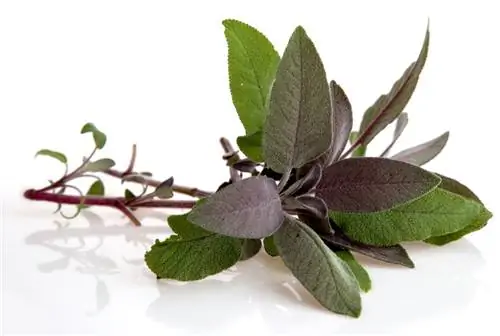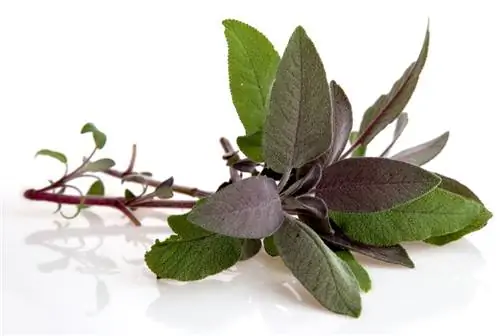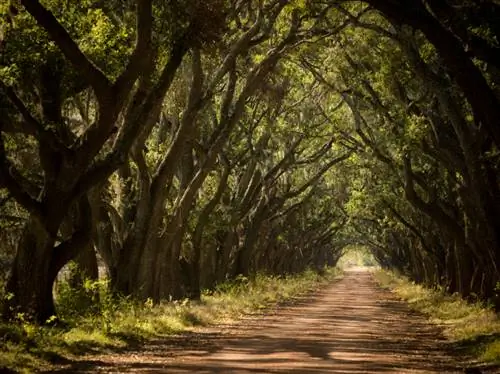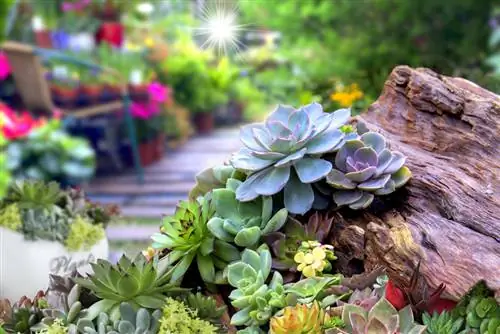- Author admin [email protected].
- Public 2023-12-16 16:46.
- Last modified 2025-06-01 06:02.
It's not that easy to find your favorites for your home herb garden from more than 900 types of sage and even more varieties. The following overview aims to provide a decision-making aid with a selection of recommended breedings.

Which types of sage are suitable for your own garden?
Recommended types of sage for the home herb garden are common sage (Salvia officinalis), clary sage (Salvia sclarea), yellow forest sage (Salvia glutinosa) and Spanish sage (Salvia lavandulifolia). They are hardy, aromatic and versatile.
Robust and full of aroma - hardy types of sage
The effort required to care for sage is reduced to a minimum if no special precautions have to be taken for overwintering. The following hardy species are therefore very popular in private herb gardens:
- Real sage (Salvia officinalis): undisputed leader in the ranking of the best varieties, aromatic and completely hardy
- Cly sage (Salvia sclarea): the large relative of the common sage with a height of 110-150 cm
- Yellow forest sage (Salvia glutinosa): a drought-tolerant species that also thrives in partial shade
- Spanish sage (Salvia lavandulifolia): mild in taste, winter-proof and without toxic thujone
There should be at least one steppe sage (Salvia nemorosa) in the natural garden. With its multi-faceted varieties, this species not only serves as an ornament, but also acts as a swarming pasture for bees and butterflies.
The real sage impresses with these varieties
The numerous beneficial attributes of common sage motivated skilled breeders to create wonderful varieties. We present some particularly successful representatives here:
- Krauser spice sage 'Crispa': the pretty wavy, silvery leaves are a feast for the eyes and a scent experience at the same time
- Yellow-colored spice sage 'Icterina': expressive variegated foliage, rich in intense flavor
- White dwarf sage 'Nana Alba': the ideal variety for pots and balcony boxes with a height of 20-40 cm
- Purple sage: the purple-violet leaves and flowers invite you to dry them for home decoration
Colorful spice sage 'Tricolor' is a feast for the senses. The leaves are white, gray and spotted purple. A purple-blue flower appears in June and July. As if that weren't enough, the leaves exude an intoxicating scent when touched lightly. No one can escape this eye-catcher in the herb garden or in the perennial bed.
Tips & Tricks
If you are looking for suitable planting partners for sage, you will find it at Heiligenkraut. The drought-tolerant perennial harmonizes wonderfully with all types of sage thanks to its gray-green foliage and yellow flowers. In addition, the white-flowering lemon mountain herb with a height of 20 centimeters is suitable as a decorative underplant.






